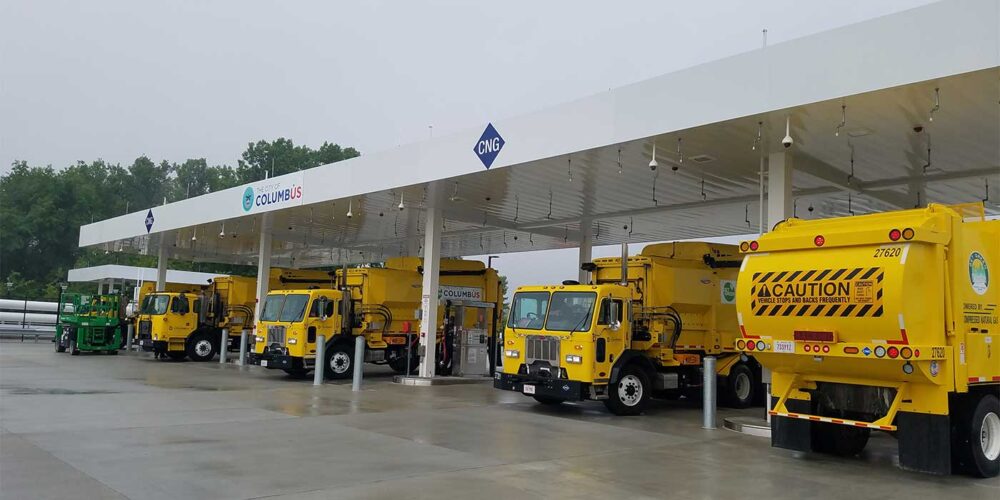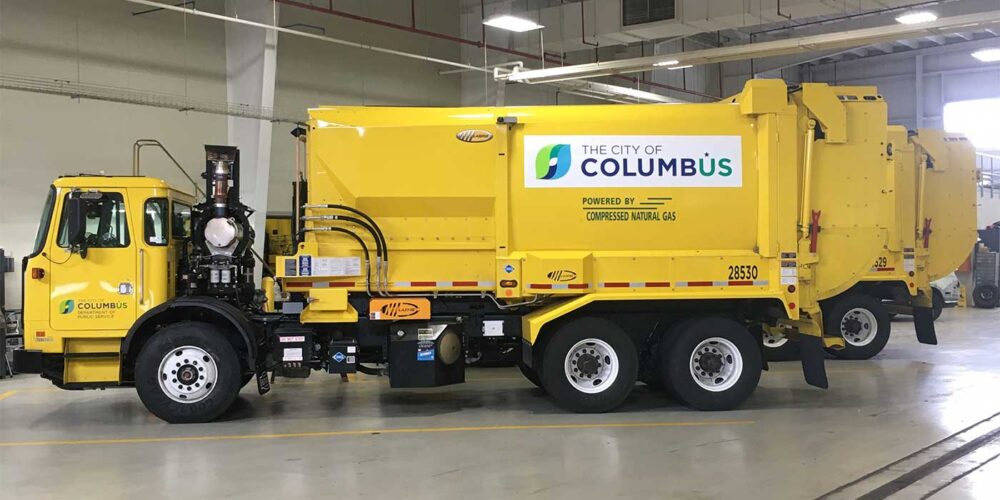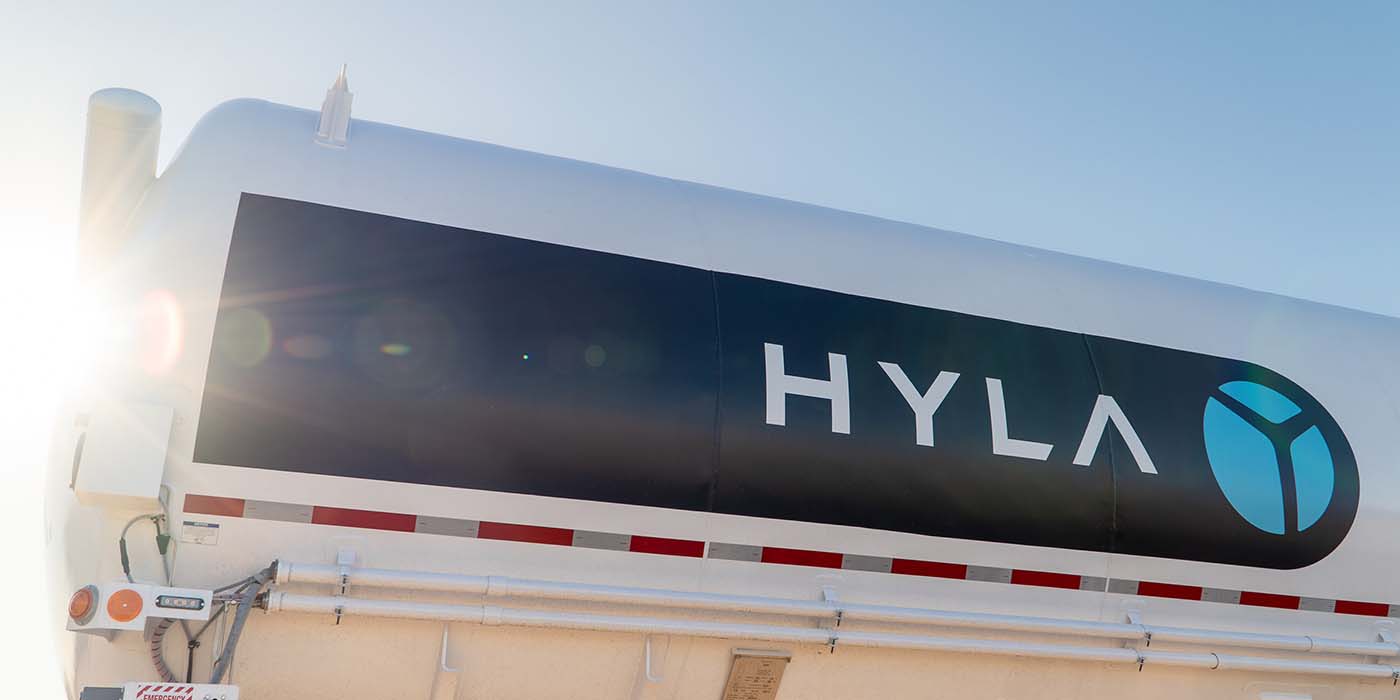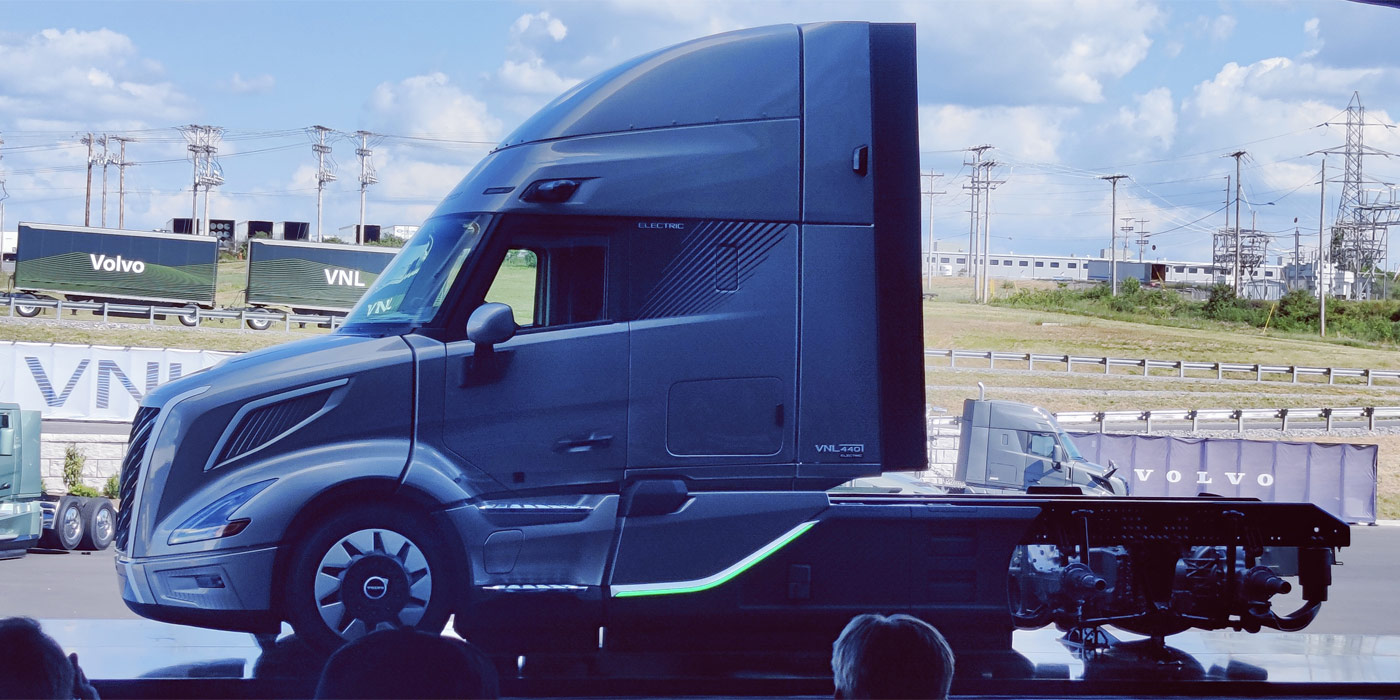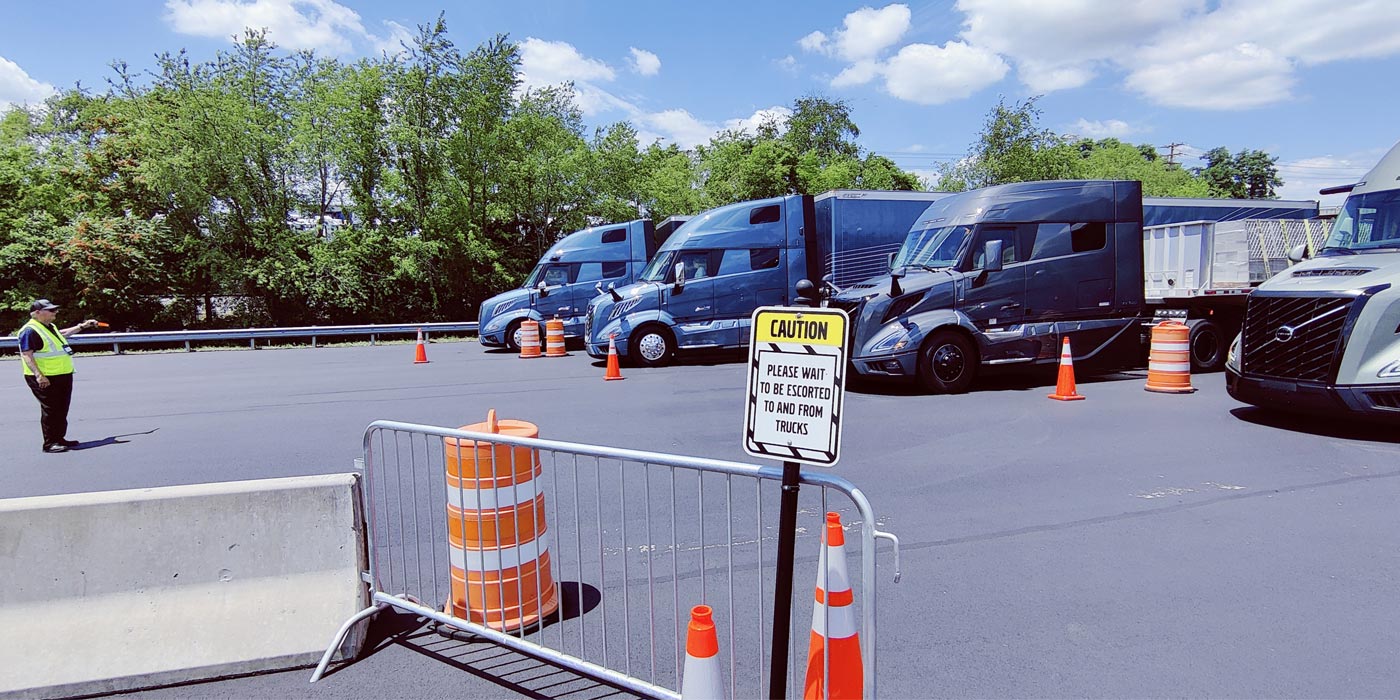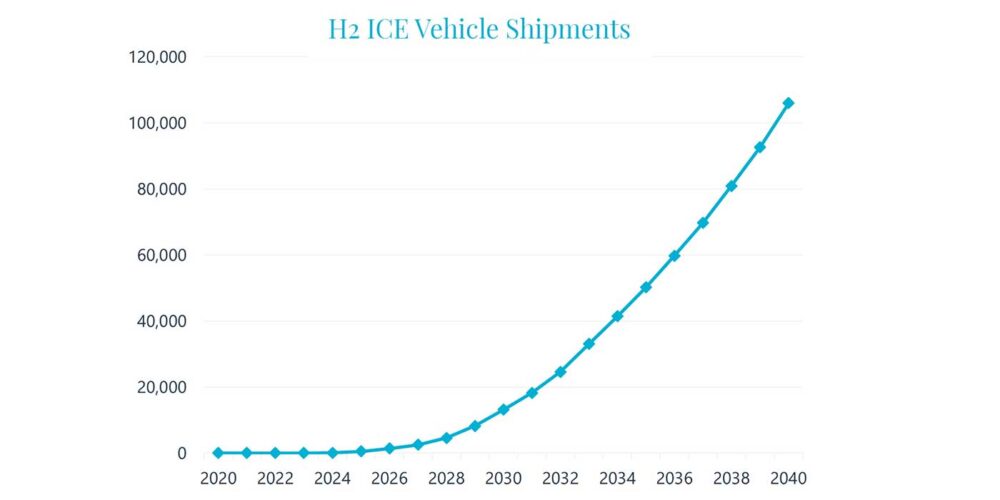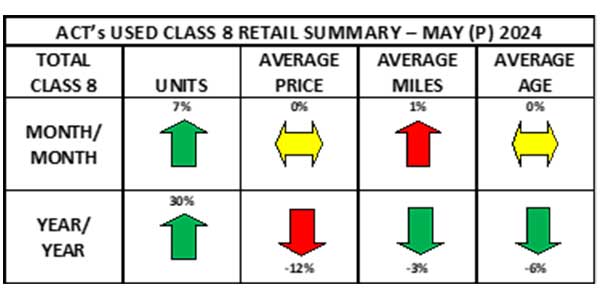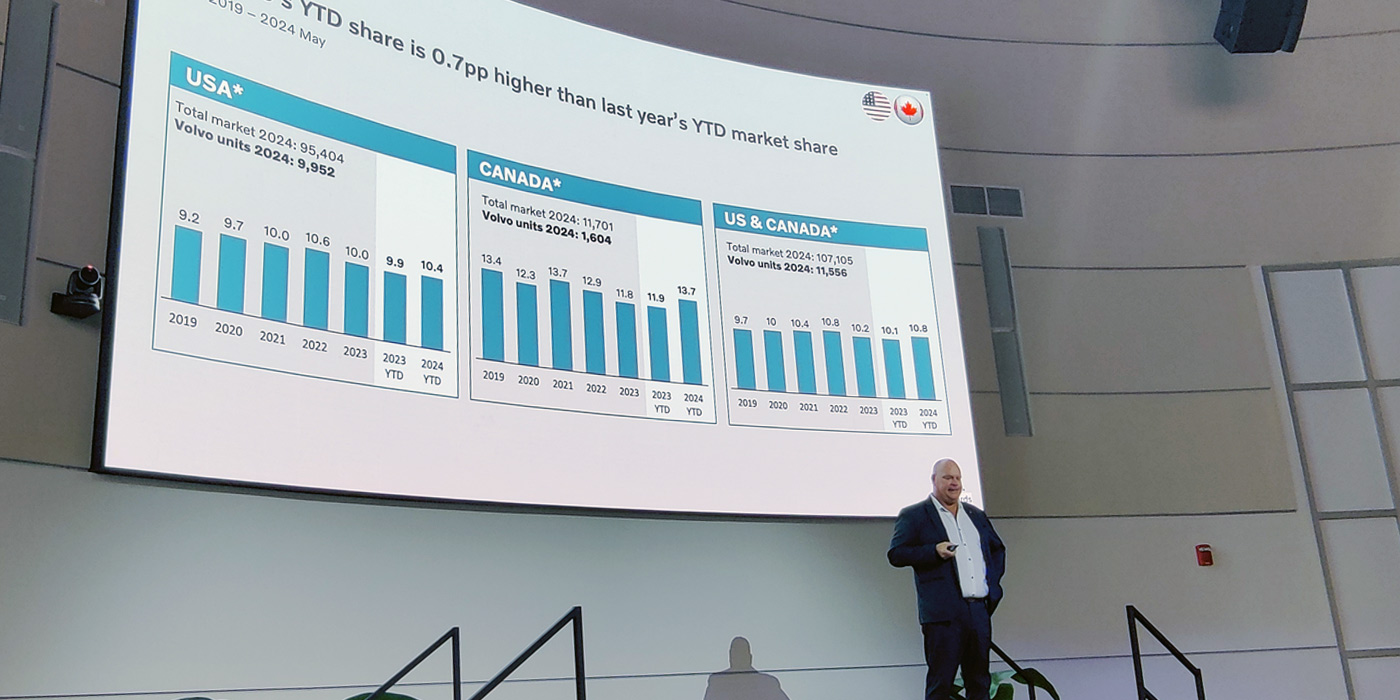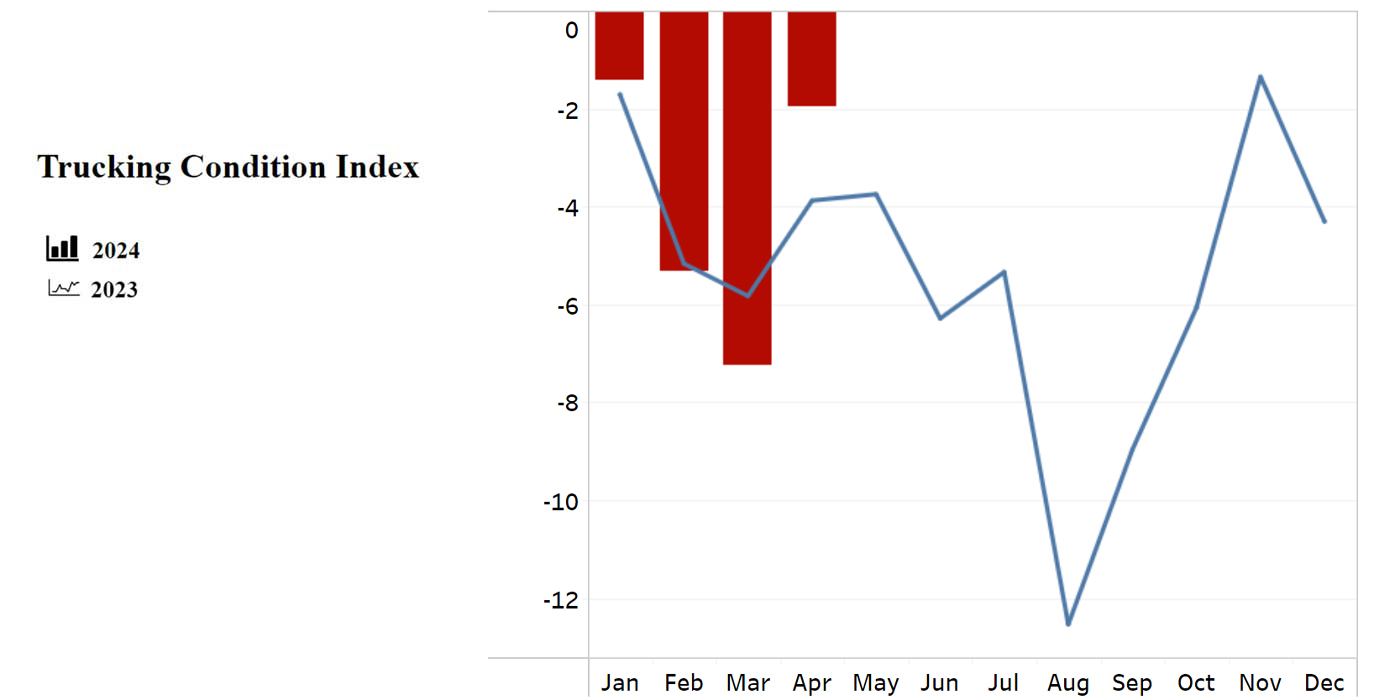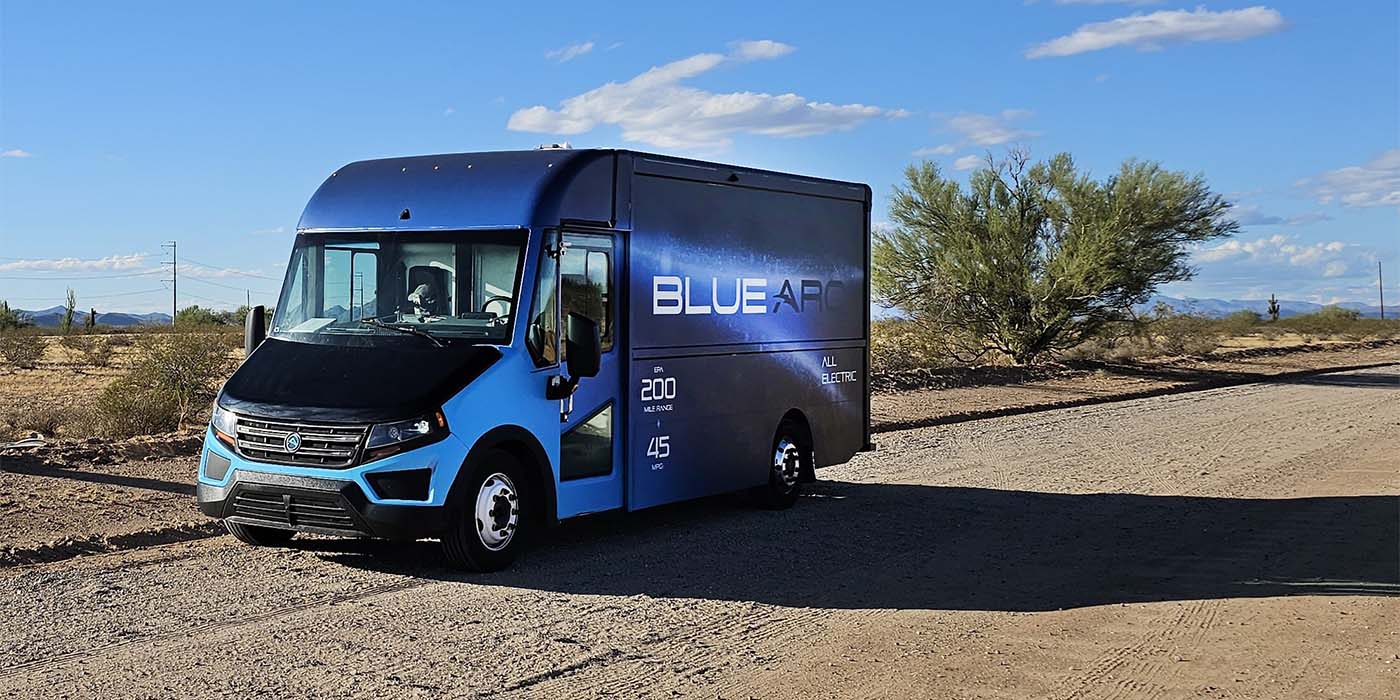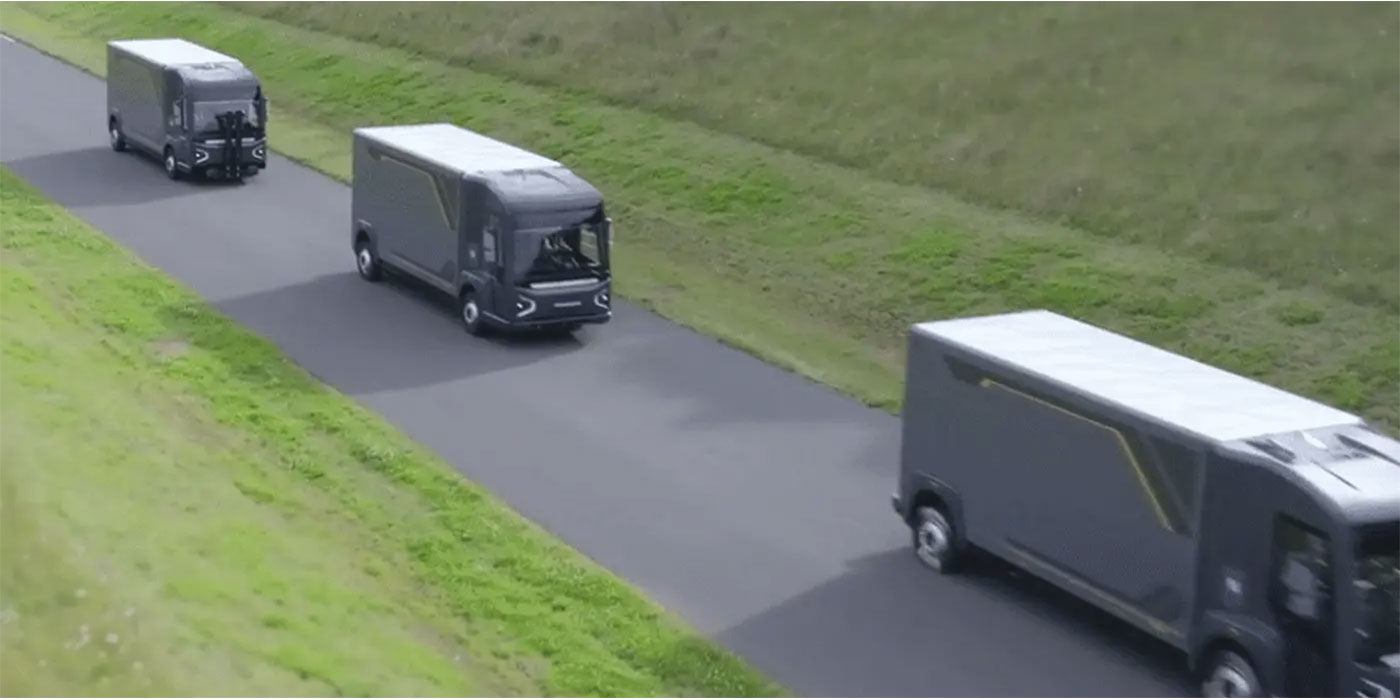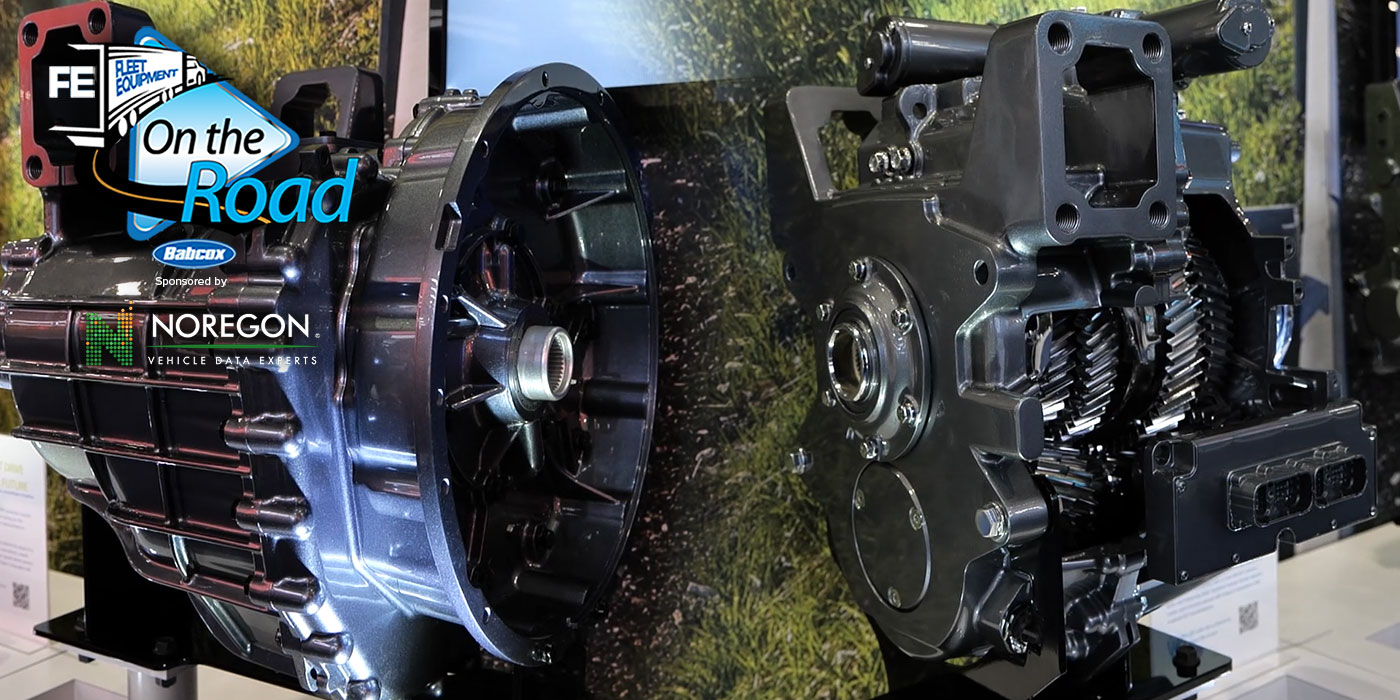In February 2020, Mayor Andrew Ginther announced an ambitious goal: Columbus, Ohio, the state’s most populous city, would be carbon neutral by 2050. To meet that objective, city officials and community stakeholders in the state capital created a Climate Action Plan.
At the city’s Division of Fleet Management, sustainability initiatives are detailed in a Green Fleet Action Plan that was first implemented in 2011 and is updated every three years. “The plan is a roadmap to greening our city’s fleet,” said Amy Krohn, environmental policy and project manager in the Division of Fleet Management. “The latest update to the plan builds on successes while strengthening our ongoing efforts to reduce our carbon footprint.”
One of those efforts pre-dates the mayor’s mandate. In 2013, the Columbus fleet began fielding Compressed Natural Gas dump, refuse, utility, and box trucks. The city fleet now has 311 CNG-powered models, and they continue to order more. The trucks are a mix of Ford F-450 and F-550, Freightliner, Peterbilt, Mack and Autocar models. Heavy-duty units have Cummins CNG engines.
“We’ve had great success with the CNG trucks,” Krohn related. “There haven’t been any major issues and because CNG is a lot less expensive than diesel on a per gallon equivalent basis, we’re realizing a large economic benefit. Last year, including the per gallon federal fuel tax credit, we saved more than $2 million in fuel costs.”
To support the fueling needs of its CNG trucks, Columbus built three stations across the city that also have public access, and a fourth facility that the Division of Fleet Management shares with the local Transit Authority. Federal stimulus money helped fund the fueling station projects.
Looking ahead, Krohn said that renewable natural gas (RNG) adoption would result in significant emissions reductions from the city’s fleet as well as lowering the current CNG cost per gallon equivalent.
“Any of the city’s current CNG stations can source RNG through a market contract with no modifications to current infrastructure, resulting in little to no upfront capital cost,” Krohn added. “A recent analysis predicts that switching to RNG would result in approximately 21% to 41% emissions reductions for the city’s fleet.”
Jason Smith, operations manager at the Division of Fleet Management that maintains over 6,230 pieces of equipment and has cradle to grave responsibility for all city vehicles, reported that the CNG trucks require similar maintenance to diesel models. “We service everything ourselves using our own technicians, who receive ongoing training and annual recertification,” he said.
“Our drivers are satisfied with the CNG trucks as well,” Smith added. “They did have some initial concerns about less torque but through driver education they’ve come to realize that the trucks get the job done, and they appreciate the lower emissions odor, which is also a plus because the equipment is usually working in the community.”
As part of its vision to be carbon neutral by 2050, Columbus has committed to a goal of reducing greenhouse gas (GHG) emissions by 45% from municipal operations by the end of 2030. “Our efficient management of fuel consumption and increase in the overall efficiency of the fleet has driven down our GHG emissions by approximately 35% over the last few years,” Krohn said.
“One of the most effective ways to drive down emissions is to reduce petroleum use,” Krohn explained further. “We expect this to continue with the yearly addition of CNG and electric vehicles to our fleet as well as our continued use of biodiesel, E85 and propane fuels.”
Electric vehicles are also replacing internal combustion engines in the Columbus fleet, initially in light-duty classes. Currently, there are 91 plug-in hybrid and 111 battery electric models, including Nissan, Chevrolet, Kia and Prius units. The utilities operation also has seven electric Ford eTransit vans in service. From 2022 through this year, the Division of Fleet Management has set a target of at least 75% of light-duty purchases each budget year will be green vehicles.
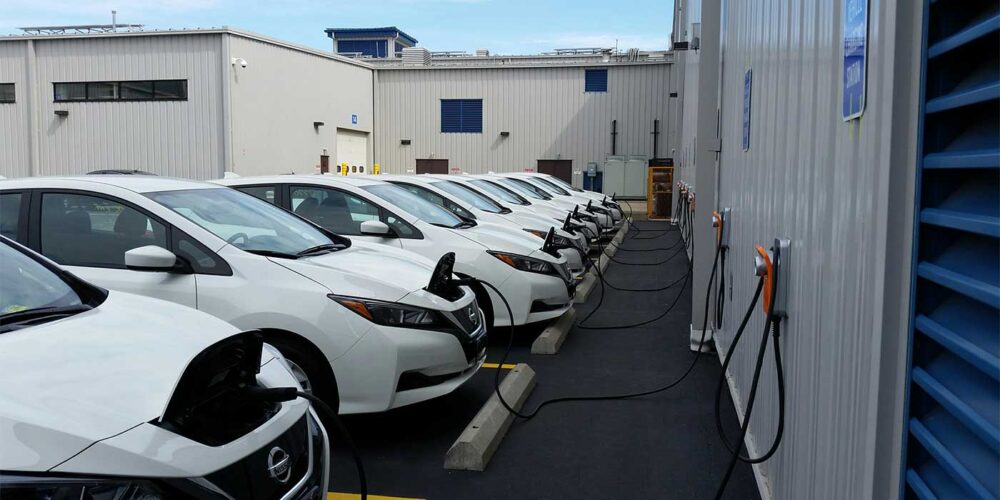
“We’re waiting for more options to use medium- and heavy-duty electric trucks,” Krohn said. “It’s not a lack of desire. The availability of electrified heavy-duty vehicles that would meet the needs of our applications is currently limited but expected to expand by the end of this decade so we will explore heavy-duty electric vehicles with divisions whenever feasible.
“The Refuse Division is also exploring medium-duty electric box trucks to replace diesel models,” Krohn added. “Overall, we’re targeting at least 80% of medium- and heavy-duty purchases each budget year will be green.”
By the end of 2023, Columbus had added two propane mowers and two propane forklifts and ten off-road electric units that were a mix of utility carts, scissor lifts and sweepers to its fleet. The Division of Fleet Management continues to work with other city divisions to identify green off-road options when available and operationally practical.
To gauge the ROI of its green fleet decisions in 2023, Columbus partnered with Utilimarc, a benchmarking company it has used for analyzing fleet costs for the past seven years, to develop a GHG Emissions Dashboard.
“The dashboard will track the impact of our various alternative fuel vehicles on fuel use and cost as well as GHG emissions,” Krohn explained. “We haven’t been able to do that before but now we’ll be able to see reductions by vehicle type and use that information to help make more informed decisions about alternative fuels and vehicles and equipment.”
The Columbus Division of Fleet Management has also joined the Utilimarc Electric Vehicle Consortium, a community of forward-thinking fleet leaders and data experts who are focused on better understanding the cost, usage and performance of electric vehicles and charging infrastructure.
“Sharing information and being able to see what other entities are doing based on industry benchmarks is essential to making effective decisions,” Krohn said.
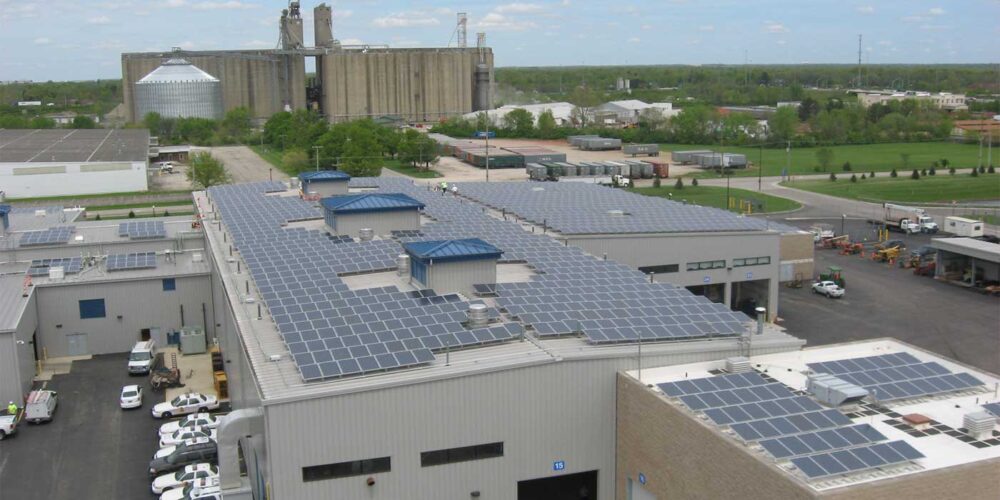
The city of Columbus has also identified its buildings as a major consumer of energy and the largest single source of GHG emissions community-wide. By 2050, buildings must be carbon neutral operating on 100% clean power. To help achieve that goal the Division of Fleet Management has been installing solar panels on fleet maintenance facilities and has updated lighting to LEDs.
“We also continue to refine and enhance green procurement practices, to work with city agencies to right-size and downsize their fleets, and to promote anti-idle policies,” Krohn said. “As a result, seven city divisions are all certified as Ohio Green Fleets.
“The past several years have yielded significant accomplishments toward reducing emissions but continuing to achieve our targets and reduce emissions from fleet operations requires the participation of all city departments and divisions,” Krohn continued. “The Division of Fleet Management, with support from the Director of Finance and the Mayor’s Sustainable Columbus initiative, will take the lead in implementing these actions.”

